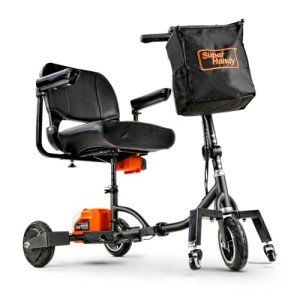Embracing Freedom: A Comprehensive Guide to Compact Mobility Scooters
As the world continues to embrace development and inclusivity in transport, compact mobility scooters have become a pivotal alternative for people who seek independence and mobility. These nimble devices are created for those with limited mobility and have actually become significantly popular among seniors, individuals with impairments, and anyone requiring assistance in navigating. This blog post explores the nuances of compact mobility scooters, their benefits, types, and whatever one needs to know to make an informed choice.
What are Compact Mobility Scooters?
Compact mobility scooters are small, lightweight versions of conventional mobility scooters, engineered for easy transport and maneuverability. Connie Partee come geared up with features that deal with urban environments, such as narrower frames and tighter turning radii, making them ideal for indoor and outdoor usage. Whether you need a mobility scooter for running errands, socializing, or simply taking pleasure in a day out, these scooters make such activities available.
Table 1: Key Features of Compact Mobility Scooters
| Feature | Description |
|---|---|
| Size | Normally in between 3-4 wheels; compact style |
| Weight | Lightweight variations typically weigh 80-100 pounds |
| Battery Range | Can typically travel as much as 15-25 miles |
| Speed | Typical speeds of 4-7 miles per hour |
| Turning Radius | Smaller sized turning radius for metropolitan dexterity |
| Portal Accessibility | Capability to fit through standard doorways |
| Mobility | Easily disassembled for transport |
Advantages of Using Compact Mobility Scooters
1. Improved Mobility
Compact mobility scooters provide users the freedom to browse environments that may otherwise be difficult or inaccessible.
2. Flexibility and Independence
Numerous users report a considerable increase in their ability to run errands or mingle thanks to these scooters, which promote independence.
3. Mobility
A lot of compact mobility scooters can be quickly dismantled into lightweight parts, making them hassle-free for travel in cars and trucks or public transport.
4. Cost-efficient Solution
Compared to powered wheelchairs, compact scooters frequently include lower cost tags, making them an economical choice for numerous.
5. Improved Quality of Life
With boosted mobility comes increased opportunities for engagement with family, buddies, and social activities.
Types of Compact Mobility Scooters
Choosing the ideal compact mobility scooter depends upon comprehending the various types available in the market. Here's a breakdown:
1. Travel Scooters
- Description: Lightweight and easily disassembled, they are developed for people who are frequently on the move.
- Use Case: Ideal for holidays or brief trips.
2. 3-Wheel Scooters
- Description: Emphasizing maneuverability and density.
- Use Case: Best for indoor use and tighter areas.
3. 4-Wheel Scooters
- Description: Offer more stability and can handle rougher terrain.
- Usage Case: Suitable for outside expeditions and irregular paths.
4. Sturdy Scooters
- Description: Engineered for heavier people, often with higher weight capabilities.
- Use Case: Ideal for users requiring toughness and support.
Crucial Considerations When Choosing a Scooter
Before purchasing, it's crucial to examine various aspects that might affect the decision. Here are key considerations:
1. User's Mobility Needs
Consider the specific mobility limitations of the user, as well as the common environments where the scooter will be used.
2. Weight Capacity
Guarantee the scooter can safely accommodate the user's weight, consisting of any additional items they might carry.
3. Battery Life
Examine how far the scooter can travel on a single charge, particularly if it will be used for prolonged getaways.
4. Portability
Examine how quickly the scooter can be disassembled and the weight of the specific parts if travel is a priority.
5. Safety Features
Look for functions such as headlights, turn signals, and anti-tip mechanisms for improved safety.
FAQ Section
Q1: How do I keep a compact mobility scooter?
A: Regular maintenance consists of checking tire pressure, cleaning the battery terminals, and guaranteeing all moving parts are oiled. Always describe the maker's specific standards.
Q2: Are compact mobility scooters covered by insurance?
A: Coverage can differ based upon your insurance plan and state regulations. Some may cover a part of the expense if prescribed by a medical specialist.
Q3: Can I utilize my mobility scooter on public transportation?
A: Many public transport systems permit mobility scooters, however it's suggested to inspect particular regulations and size restrictions for each mode of transport.
Q4: How do I transfer my scooter?
A: Most compact mobility scooters are developed to be quickly dismantled. This makes it simple to carry in automobiles or store away when not in use.
Q5: What is the normal price range for a compact mobility scooter?
A: Prices can vary widely based on functions and brand however generally range from ₤ 600 to ₤ 3,000.
Compact mobility scooters represent the intersection of comfort, flexibility, and innovation in available transport. With different types available, users are empowered to pick devices that cater to their unique mobility requirements. By thinking about aspects like weight capability, battery life, and mobility, individuals can improve their lifestyle, keep self-reliance, and broaden their horizons. With the right compact mobility scooter, the world ends up being a more available place.

